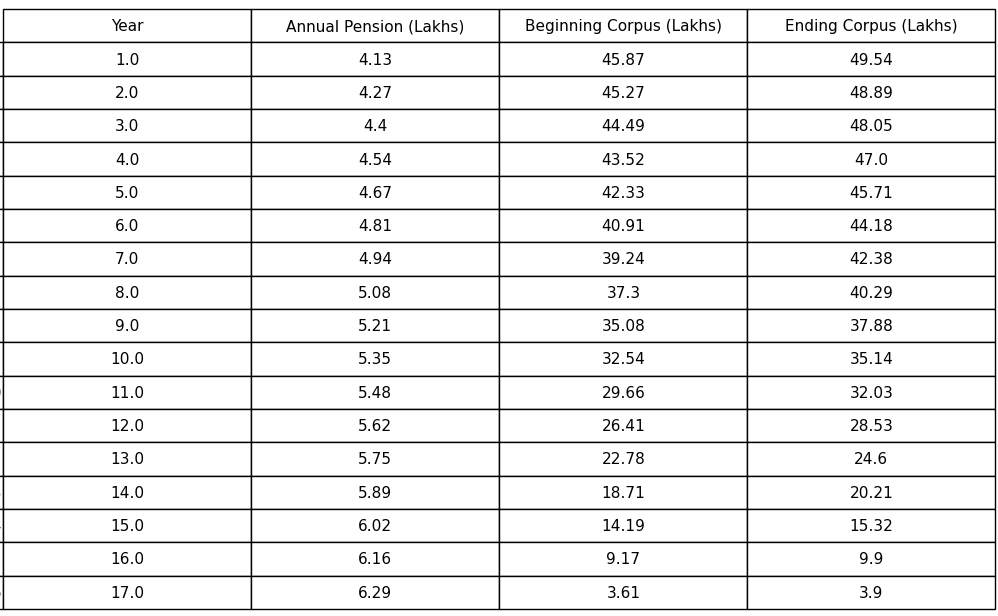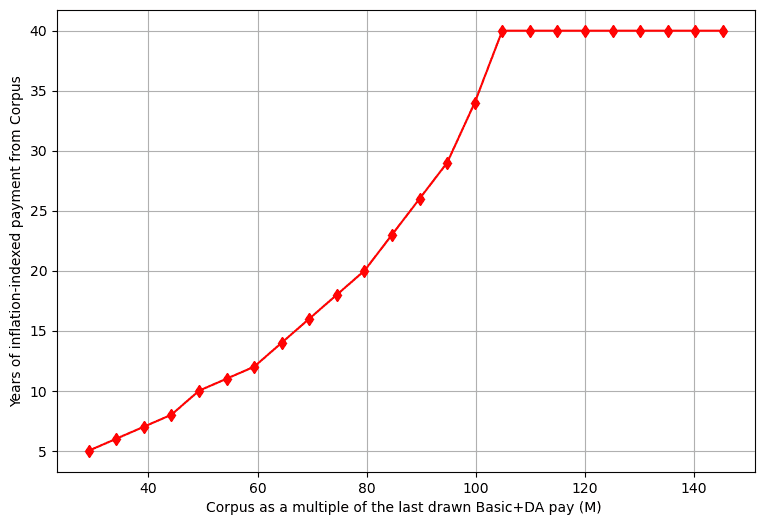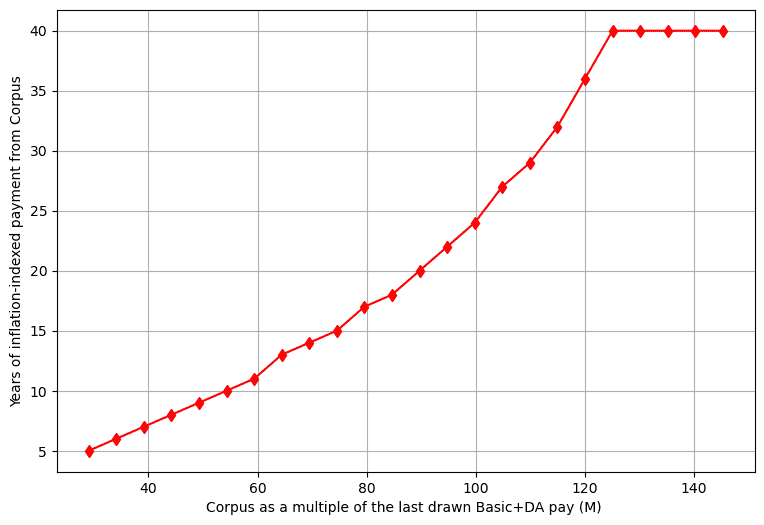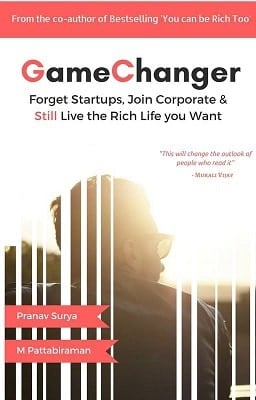In this article, Ganesh, a central government employee, decodes the unified pension scheme and discusses when it makes sense to opt for it.
Per the UPS Gazette notification, an individual corpus will be built for each employee, consisting of 20% of Basic + DA (10% by employee and 10% by government/employer). A separate contribution of 8.5% of Basic + DA will be made by the employer/government to a pooled corpus.
PFRDA will define a benchmark corpus value based on the default allocation of the individual corpus. Upon superannuation, the benchmark value from the individual corpus will be transferred to the pooled corpus. If additional corpus remains in the individual account, that will be returned to the employee. If the corpus is lower than the benchmark corpus, the employee can contribute the remaining amount or accept a lower pension.
After superannuation, PFRDA will pay 50% of the Basic+DA (average value of last 12 months of pay) per month from the pooled corpus until the death of the employee. The payout from the pooled corpus will also be inflation-indexed, which is incorporated due to the changes in DA (Dearness Relief for pensioners). Upon death of the employee, PFRDA will pay 30% of Basic+DA to the legally wedded spouse. PFRDA will also provide a lump sum gratuity at the time of superannuation.
UPS vs OPS
The terms of pension in UPS are similar to OPS (except the lumpsum at the beginning, and the reduced pension to family). However, employees in UPS are actually taking a 10% pay cut w.r.t employess under OPS. This is due to the fact that the 10% contribution made by the employee is transferred to the Pooled corpus upon superannuation.
Join 32,000+ readers and get free money management solutions delivered to your inbox! Subscribe to get posts via email! (Link takes you to our email sign-up form)
🔥Want to create a complete financial plan? Learn goal-based investing? Exclusive access to our DIY tools? Increase your income with your skills? Use this link to enjoy massive discounts on our robo-advisory tool & courses! 🔥
For example, if an employee were unmarried/divorced/widow/widower at the time of retirement, and they die before they recoup the entire individual corpus through pension, the remaining balance in the pooled corpus will be used to pay the other pensioners.
UPS vs NPS
In the NPS, the current contribution to the individual corpus is 24% of Basic+DA for Central government employees (10% from employee + 14% from government). With respect to employees under OPS, the government pays an additional 14% as salary, under the condition that this money will be available to you only after reaching the age of 60 (with an appropriate level of compounding). Upon superannuation, the employee can withdraw 60% of the Individual corpus tax-free and will have to invest the remaining 40% in an annuity plan. There is no guaranteed pension after superannuation as in UPS (or OPS).
One of the questions about the NPS is: will the final corpus be enough for sustenance after retirement? While this is a valid question, the UPS does not answer this question either! The UPS only gives a fixed amount every month; if one’s expenses are higher than 50% of Basic+DA at retirement, they will have to pull in money from their other investments (for which retirement planning is an essential prerequisite). Therefore, choosing to move to UPS or staying in NPS is NOT a retirement question! the The relevant question is: Is the proposed 10%(+14%) pay cut worth the returns after superannuation?
One way to answer this question is to ask how long a corpus “X” can provide inflation-indexed payments of 50% Basic+DA per month? Let’s consider the example given in the Gazette notification: an individual having a Basic Pay of Rs. 45,000/- and an Individual Corpus of Rs. 50,00,000/- retires on March 31, 2025, and opts for the Unified Pension Scheme (UPS). The current DA allowance is 53%. To determine how long the corpus of Rs. 50 Lakhs will provide inflation-indexed payments, we will use the following “algorithm”:
1. Upon superannuation, the annual payment for the first year of retirement is withdrawn from the Individual corpus.
2. The remaining corpus is invested in a risk-free/safe account that grows untouched until the next year. We will assume this to be 8% – approximately what is available for Senior citizens now through fixed deposits and post office saving schemes.
3. Inflation-indexing is incorporated in the subsequent annual payout (at the average rate of 5% – see Is the Unified Pension Scheme sustainable?), and Steps 1 and 2 are repeated until the corpus becomes negative.
The table below shows the details of this calculation:

As we can see, the corpus of Rs. 50 Lakhs will give this individual an inflation-indexed pension for 17 years. If we assume that the current age of the individual is 60, then the corpus will run out by the time they reach age 78. Therefore, in all likelihood, the built-up corpus will probably not last for the lifetime of the individual and/or spouse. As a result, the individual will benefit by enrolling in the UPS.
Using the above calculation as an estimate, how much corpus do we need to accumulate if we want it to last for at least 40 years after retirement? To determine this value for any individual (different salary and corpus), we will normalize the Individual corpus as a multiple of the last drawn Basic+DA pay. For example, in the above case
M = 5000000/(45000*1.53) = 72.6
The value M determines how long the corpus will give 50% of the last Basic+DA pay without any inflation-indexation to an individual. In the above scenario, the corpus will give Rs. (45000*1.53*0.5) for 145 months, or 12 years and 1 month from the date of superannuation. The figure below shows the number of years the corpus will last for M, varying from 60 to 300.

As we can see from this figure, if the individual corpus is 105 times the last drawn paycheck (Basic + DA), then the corpus will last for 40 years. Note that the calculation is stopped when the corpus lasts for 40 years, as we think this is a good enough estimate. If one accumulates a corpus beyond this value, then the NPS will match, or most likely, be better than the UPS.
In doing this calculation, we have assumed that the net difference between the growth of the corpus and the inflation adjustment is 3%. If the difference between these two values is 1%, the number of years the individual corpus will last is shown in the figure below.

The corpus required now needs to be roughly 20% larger than the earlier estimated corpus (the multiplier becomes 125 instead of 105). While the exact value of the required corpus is difficult to determine, we have performed this calculation with very conservative estimates based on available data. Therefore, we can conclude that if one accumulates a corpus which is at least 100 times the last drawn salary (Basic+DA), then the NPS will more or less be equally viable as an option when compared to UPS.
We now have an estimate of the required corpus. Is it possible to build such a corpus during one’s employment? This question has already been answered in an earlier post
Revised UPS vs NPS Calculator after Jan 2025 Gazette Notification
The calculation remains more or less the same. We will provide an estimate of the corpus assuming the following parameters
1. Yearly Base Salary Increment : 3%
2. Annual Dearness Inflation: 5%
3. XIRR of NPS corpus: 8%
4. Years of Employment: 25 years
The corpus will be 98 times the last drawn pay for the above-chosen parameters for any starting base salary. Assuming an employee works for 30 years (instead of 25), the corpus will be 130 times the last drawn pay. As mentioned earlier, we have chosen a conservative estimate for the salary increment and the corpus’s growth rate. Therefore, we can conclude that the corpus built-in NPS should be able to provide the same benefits as the UPS. If one carries out proper financial planning and builds a good income stream after retirement, staying in NPS might be more prudent in controlling the individual corpus.
Some remarks regarding the above analysis:
1. The UPS is also market-linked, so we have assumed that there is no difference in the NPS and UPS corpus (except for the additional 4% contribution for Central government employees). If the market-returns are very poor, then the government will have to increase their contributions to UPS (currently defined as 18.5%). If this contribution has to increase every year, then the UPS becomes an OPS-lite scheme, and the OPS scheme has already been shown to be financially unviable. If one retires under such scenarios, they will also have to worry about the then-government not honouring their pension payments. See: UPS vs NPS: Which should I choose for retirement?
2. In the OPS, the pension payments are also revised when a new pay commission is implemented. The gazette notification does not clarify whether this is applicable for UPS. The calculations will have to be modified if this is indeed the case. Further, the nuance of 40% of the NPS corpus being linked to an annuity plan hasn’t been used in the comparison.
3. The NPS was introduced in 2004, and it has been only 15 years since the schemes were set up. See: After 13 years of investing in the NPS, my return is 8.78%. Therefore, there is not enough data to predict the performance of NPS as of today. As a corollary, one can also say that the introduction of the UPS is probably not a referendum on the NPS (in fact, anybody who joined in NPS and retires before 2029 will not have the minimum 25 years reuired for full payout in UPS). In other words, we don’t think that UPS has been introduced because NPS is a bad scheme for retirement.

Use our Robo-advisory Tool to create a complete financial plan! ⇐More than 3,000 investors and advisors use this! Use the discount code: robo25 for a 20% discount. Plan your retirement (early, normal, before, and after), as well as non-recurring financial goals (such as child education) and recurring financial goals (like holidays and appliance purchases). The tool would help anyone aged 18 to 80 plan for their retirement, as well as six other non-recurring financial goals and four recurring financial goals, with a detailed cash flow summary.
🔥You can also avail massive discounts on our courses and the freefincal investor circle! 🔥& join our community of 8000+ users!
Track your mutual funds and stock investments with this Google Sheet!
We also publish monthly equity mutual funds, debt and hybrid mutual funds, index funds, and ETF screeners, as well as momentum and low-volatility stock screeners.
You can follow our articles on Google News

We have over 1,000 videos on YouTube!

Join our WhatsApp Channel



- Do you have a comment about the above article? Reach out to us on Twitter: @freefincal or @pattufreefincal
- Have a question? Subscribe to our newsletter using the form below.
- Hit 'reply' to any email from us! We do not offer personalised investment advice. We can write a detailed article without mentioning your name if you have a generic question.
Join 32,000+ readers and get free money management solutions delivered to your inbox! Subscribe to get posts via email! (Link takes you to our email sign-up form)
About The Author
 Dr M. Pattabiraman (PhD) is the founder, managing editor and primary author of freefincal. He is an associate professor at the Indian Institute of Technology, Madras. He has over 13 years of experience publishing news analysis, research and financial product development. Connect with him via Twitter(X), LinkedIn, or YouTube. Pattabiraman has co-authored three print books: (1) You can be rich too with goal-based investing (CNBC TV18) for DIY investors. (2) Gamechanger for young earners. (3) Chinchu Gets a Superpower! for kids. He has also written seven other free e-books on various money management topics. He is a patron and co-founder of “Fee-only India,” an organisation promoting unbiased, commission-free, AUM-independent investment advice.
Dr M. Pattabiraman (PhD) is the founder, managing editor and primary author of freefincal. He is an associate professor at the Indian Institute of Technology, Madras. He has over 13 years of experience publishing news analysis, research and financial product development. Connect with him via Twitter(X), LinkedIn, or YouTube. Pattabiraman has co-authored three print books: (1) You can be rich too with goal-based investing (CNBC TV18) for DIY investors. (2) Gamechanger for young earners. (3) Chinchu Gets a Superpower! for kids. He has also written seven other free e-books on various money management topics. He is a patron and co-founder of “Fee-only India,” an organisation promoting unbiased, commission-free, AUM-independent investment advice.Our flagship course! Learn to manage your portfolio like a pro to achieve your goals regardless of market conditions! ⇐ More than 3,500 investors and advisors are part of our exclusive community! Get clarity on how to plan for your goals and achieve the necessary corpus no matter the market condition!! Watch the first lecture for free! One-time payment! No recurring fees! Life-long access to videos! Reduce fear, uncertainty and doubt while investing! Learn how to plan for your goals before and after retirement with confidence.
Increase your income by getting people to pay for your skills! ⇐ More than 800 salaried employees, entrepreneurs and financial advisors are part of our exclusive community! Learn how to get people to pay for your skills! Whether you are a professional or small business owner seeking more clients through online visibility, or a salaried individual looking for a side income or passive income, we will show you how to achieve this by showcasing your skills and building a community that trusts and pays you. (watch 1st lecture for free). One-time payment! No recurring fees! Life-long access to videos!
Our book for kids: “Chinchu Gets a Superpower!” is now available!


Must-read book even for adults! This is something that every parent should teach their kids right from their young age. The importance of money management and decision making based on their wants and needs. Very nicely written in simple terms. - Arun.Buy the book: Chinchu gets a superpower for your child!
How to profit from content writing: Our new ebook is for those interested in getting a side income via content writing. It is available at a 50% discount for Rs. 500 only!
Do you want to check if the market is overvalued or undervalued? Use our market valuation tool (it will work with any index!), or get the Tactical Buy/Sell timing tool!
We publish monthly mutual fund screeners and momentum, low-volatility stock screeners.
About freefincal & its content policy. Freefincal is a News Media organisation dedicated to providing original analysis, reports, reviews and insights on mutual funds, stocks, investing, retirement and personal finance developments. We do so without conflict of interest and bias. Follow us on Google News. Freefincal serves more than three million readers a year (5 million page views) with articles based only on factual information and detailed analysis by its authors. All statements made will be verified with credible and knowledgeable sources before publication. Freefincal does not publish paid articles, promotions, PR, satire or opinions without data. All opinions will be inferences backed by verifiable, reproducible evidence/data. Contact Information: To get in touch, please use our contact form. (Sponsored posts or paid collaborations will not be entertained.)
Connect with us on social media
- Twitter @freefincal
- Subscribe to our YouTube Videos
- Posts feed via Feedburner.
Our publications
You Can Be Rich Too with Goal-Based Investing
 Published by CNBC TV18, this book is designed to help you ask the right questions and find the correct answers. Additionally, it comes with nine online calculators, allowing you to create custom solutions tailored to your lifestyle. Get it now.
Published by CNBC TV18, this book is designed to help you ask the right questions and find the correct answers. Additionally, it comes with nine online calculators, allowing you to create custom solutions tailored to your lifestyle. Get it now.Gamechanger: Forget Startups, Join Corporate & Still Live the Rich Life You Want
 This book is designed for young earners to get their basics right from the start! It will also help you travel to exotic places at a low cost! Get it or gift it to a young earner.
This book is designed for young earners to get their basics right from the start! It will also help you travel to exotic places at a low cost! Get it or gift it to a young earner.Your Ultimate Guide to Travel
 This is an in-depth exploration of vacation planning, including finding affordable flights, budget accommodations, and practical travel tips. It also examines the benefits of travelling slowly, both financially and psychologically, with links to relevant web pages and guidance at every step. Get the PDF for Rs 300 (instant download)
This is an in-depth exploration of vacation planning, including finding affordable flights, budget accommodations, and practical travel tips. It also examines the benefits of travelling slowly, both financially and psychologically, with links to relevant web pages and guidance at every step. Get the PDF for Rs 300 (instant download)